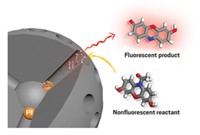Advertisement
Grab your lab coat. Let's get started
Welcome!
Welcome!
Create an account below to get 6 C&EN articles per month, receive newsletters and more - all free.
It seems this is your first time logging in online. Please enter the following information to continue.
As an ACS member you automatically get access to this site. All we need is few more details to create your reading experience.
Not you? Sign in with a different account.
Not you? Sign in with a different account.
ERROR 1
ERROR 1
ERROR 2
ERROR 2
ERROR 2
ERROR 2
ERROR 2
Password and Confirm password must match.
If you have an ACS member number, please enter it here so we can link this account to your membership. (optional)
ERROR 2
ACS values your privacy. By submitting your information, you are gaining access to C&EN and subscribing to our weekly newsletter. We use the information you provide to make your reading experience better, and we will never sell your data to third party members.
Metal-Organic Frameworks
Three-dimensional COF crystals keep growing
Strategy yields crystals big enough to reveal previously elusive structural details
by Mitch Jacoby
July 13, 2018
| A version of this story appeared in
Volume 96, Issue 29
Exceptionally high porosity and surface area coupled with chemical tunability make covalent organic frameworks (COFs) attractive materials for various applications, such as storing and separating gases. But the inability to prepare these metal-free covalently-bonded materials as large single crystals has hampered their development. That’s quickly changing.
Last month, researchers reported a route to making large 2-D COF single crystals (C&EN, June 25, page 10). Now, another team of scientists reports a strategy for growing large 3-D imine-based COF crystals—large enough to deduce previously unknown structural details via single-crystal X-ray diffraction (Science 2018 DOI: 10.1126/science.aat7679).
The new study was carried out by a large group led by Wei Wang of Lanzhou University, Junliang Sun of Peking University, and Omar M. Yaghi of the University of California, Berkeley. The improved crystallization hinges on using a large excess of aniline during imine COF synthesis. Doing so leads to formation of terminal benzene-imine moieties on the surface of the growing COF crystal. That feature provides an error-correction mechanism that prevents immediate precipitation of tiny crystals, often measuring less than 0.5 µm, allowing them instead to grow up to 100 µm in length.
Thanks to the quality and size of these crystals, the team was able to measure for the first time structural distortions, the arrangement of water guest molecules, the extent of lattice interpenetration, and other COF properties with atomic precision.




Join the conversation
Contact the reporter
Submit a Letter to the Editor for publication
Engage with us on Twitter